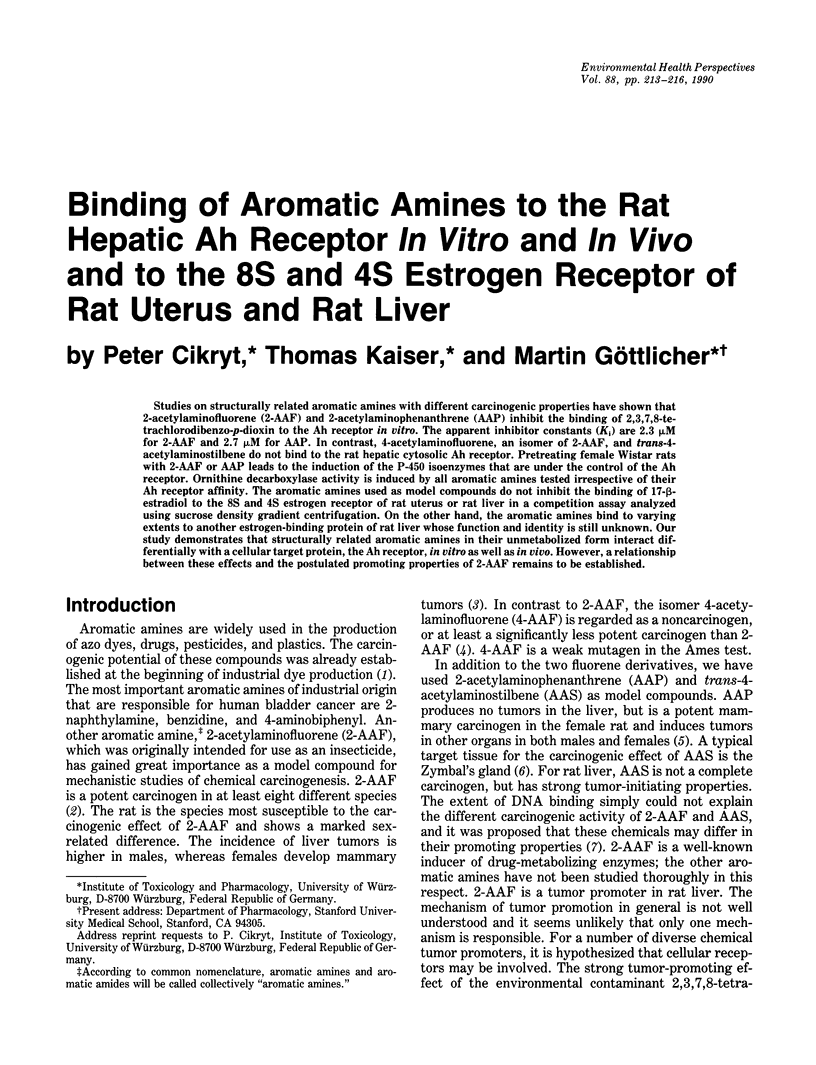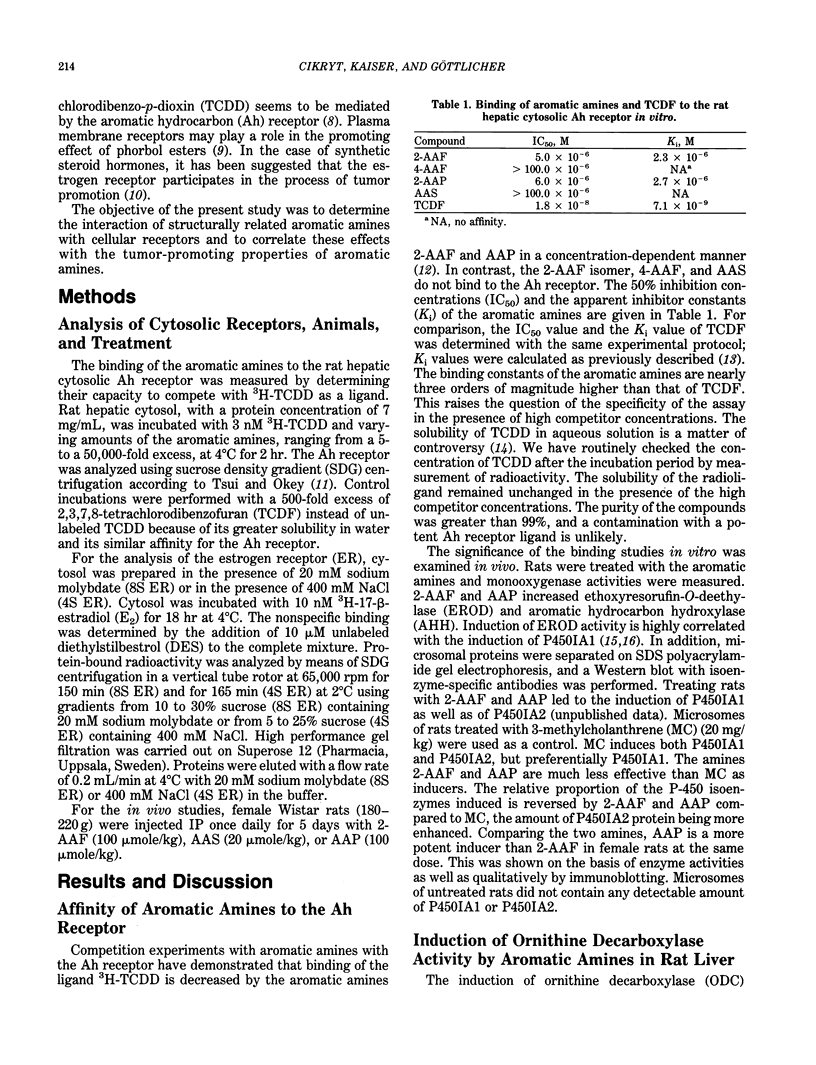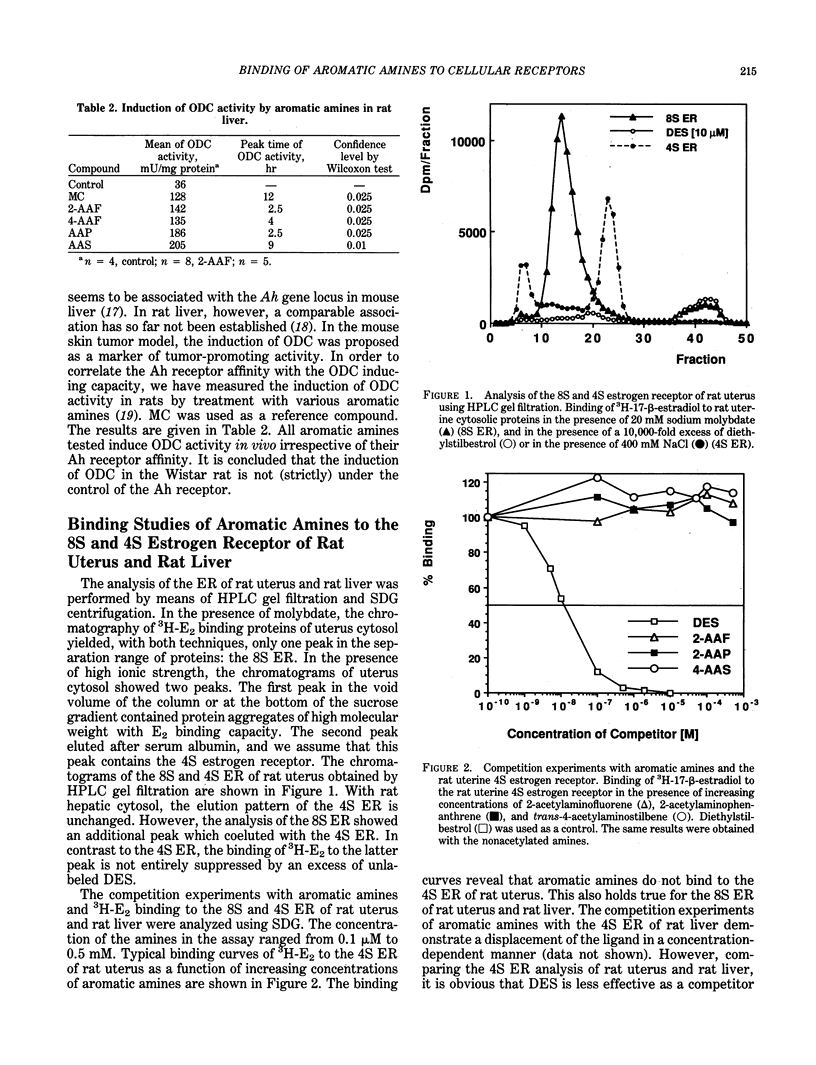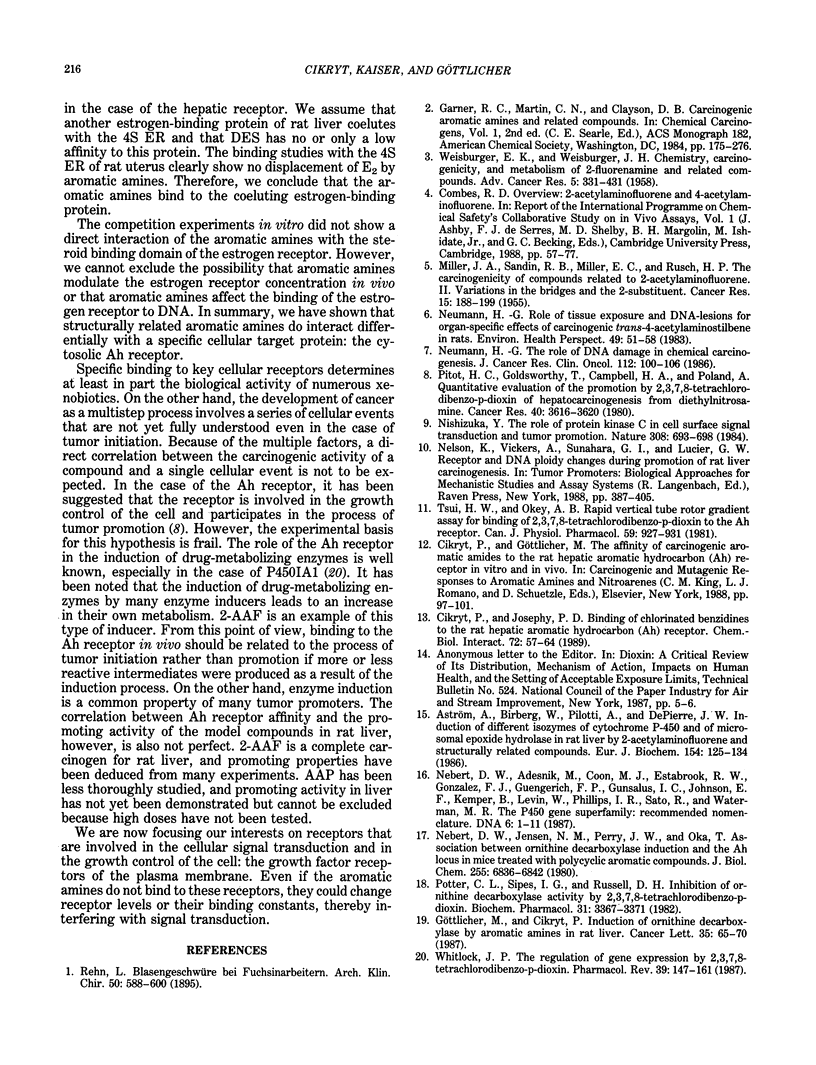Abstract
Studies on structurally related aromatic amines with different carcinogenic properties have shown that 2-acetylaminofluorene (2-AAF) and 2-acetylaminophenanthrene (AAP) inhibit the binding of 2,3,7,8-tetrachlorodibenzo-p-dioxin to the Ah receptor in vitro. The apparent inhibitor constants (Ki) are 2.3 microM for 2-AAF and 2.7 microM for AAP. In contrast, 4-acetylaminofluorene, an isomer of 2-AAF, and trans-4-acetylaminostilbene do not bind to the rat hepatic cytosolic Ah receptor. Pretreating female Wistar rats with 2-AAF or AAP leads to the induction of the P-450 isoenzymes that are under the control of the Ah receptor. Ornithine decarboxylase activity is induced by all aromatic amines tested irrespective of their Ah receptor affinity. The aromatic amines used as model compounds do not inhibit the binding of 17-beta-estradiol to the 8S and 4S estrogen receptor of rat uterus or rat liver in a competition assay analyzed using sucrose density gradient centrifugation. On the other hand, the aromatic amines bind to varying extents to another estrogen-binding protein of rat liver whose function and identity is still unknown. Our study demonstrates that structurally related aromatic amines in their unmetabolized form interact differentially with a cellular target protein, the Ah receptor, in vitro as well as in vivo. However, a relationship between these effects and the postulated promoting properties of 2-AAF remains to be established.
Full text
PDF



Selected References
These references are in PubMed. This may not be the complete list of references from this article.
- Aström A., Birberg W., Pilotti A., DePierre J. W. Induction of different isozymes of cytochrome P-450 and of microsomal epoxide hydrolase in rat liver by 2-acetylaminofluorene and structurally related compounds. Eur J Biochem. 1986 Jan 2;154(1):125–134. doi: 10.1111/j.1432-1033.1986.tb09367.x. [DOI] [PubMed] [Google Scholar]
- Cikryt P., Josephy P. D. Binding of chlorinated benzidines to the rat hepatic aromatic hydrocarbon receptor. Chem Biol Interact. 1989;72(1-2):57–64. doi: 10.1016/0009-2797(89)90017-3. [DOI] [PubMed] [Google Scholar]
- Göttlicher M., Cikryt P. Induction of ornithine decarboxylase by aromatic amines in rat liver. Cancer Lett. 1987 Apr;35(1):65–70. doi: 10.1016/0304-3835(87)90057-7. [DOI] [PubMed] [Google Scholar]
- MILLER J. A., SANDIN R. B., MILLER E. C., RUSCH H. P. The carcinogenicity of compounds related to 2-acetylaminofluorene. II. Variations in the bridges and the 2-substituent. Cancer Res. 1955 Mar;15(3):188–199. [PubMed] [Google Scholar]
- Nebert D. W., Adesnik M., Coon M. J., Estabrook R. W., Gonzalez F. J., Guengerich F. P., Gunsalus I. C., Johnson E. F., Kemper B., Levin W. The P450 gene superfamily: recommended nomenclature. DNA. 1987 Feb;6(1):1–11. doi: 10.1089/dna.1987.6.1. [DOI] [PubMed] [Google Scholar]
- Nebert D. W., Jensen N. M., Perry J. W., Oka T. Association between ornithine decarboxylase induction and the Ah locus in mice treated with polycyclic aromatic compounds. J Biol Chem. 1980 Jul 25;255(14):6836–6842. [PubMed] [Google Scholar]
- Neumann H. G. Role of tissue exposure and DNA lesions for organ-specific effects of carcinogenic trans-4-acetylaminostilbene in rats. Environ Health Perspect. 1983 Mar;49:51–58. doi: 10.1289/ehp.834951. [DOI] [PMC free article] [PubMed] [Google Scholar]
- Neumann H. G. The role of DNA damage in chemical carcinogenesis of aromatic amines. J Cancer Res Clin Oncol. 1986;112(2):100–106. doi: 10.1007/BF00404390. [DOI] [PubMed] [Google Scholar]
- Nishizuka Y. The role of protein kinase C in cell surface signal transduction and tumour promotion. Nature. 1984 Apr 19;308(5961):693–698. doi: 10.1038/308693a0. [DOI] [PubMed] [Google Scholar]
- Pitot H. C., Goldsworthy T., Campbell H. A., Poland A. Quantitative evaluation of the promotion by 2,3,7,8-tetrachlorodibenzo-p-dioxin of hepatocarcinogenesis from diethylnitrosamine. Cancer Res. 1980 Oct;40(10):3616–3620. [PubMed] [Google Scholar]
- Potter C. L., Sipes I. G., Russell D. H. Inhibition of ornithine decarboxylase activity by 2,3,7,8-tetrachlorodibenzo-p-dioxin. Biochem Pharmacol. 1982 Nov 1;31(21):3367–3371. doi: 10.1016/0006-2952(82)90613-x. [DOI] [PubMed] [Google Scholar]
- Tsui H. W., Okey A. B. Rapid vertical tube rotor gradient assay for binding of 2,3,7,8-tetrachlorodibenzo-p-dioxin to the Ah receptor. Can J Physiol Pharmacol. 1981 Sep;59(9):927–931. doi: 10.1139/y81-143. [DOI] [PubMed] [Google Scholar]
- WEISBURGER E. K., WEISBURGER J. H. Chemistry, carcinogenicity, and metabolism of 2-fluorenamine and related compounds. Adv Cancer Res. 1958;5:331–431. doi: 10.1016/s0065-230x(08)60415-7. [DOI] [PubMed] [Google Scholar]
- Whitlock J. P., Jr The regulation of gene expression by 2,3,7,8-tetrachlorodibenzo-p-dioxin. Pharmacol Rev. 1987 Jun;39(2):147–161. [PubMed] [Google Scholar]


